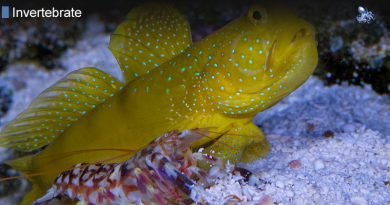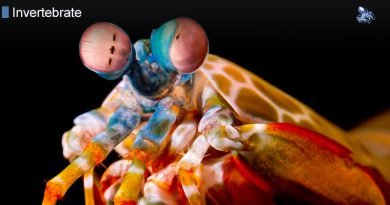Saron Shrimp
The Fascinating World of Saron Shrimp: An In-Depth Guide
Saron Shrimp, also known scientifically as Saron marmoratus, are captivating marine creatures that have become popular in the aquarium hobby. These shrimp, with their striking patterns and interesting behaviors, add a unique touch to any marine setup. In this article, we will explore the various aspects of Saron Shrimp, from their natural habitat and physical characteristics to their care requirements in a home aquarium.
Understanding Saron Shrimp’s Natural Habitat
Saron Shrimp are native to the Indo-Pacific region, where they thrive in coral reefs and rocky crevices. Their natural habitat provides them with plenty of hiding spots and an abundance of food sources. In the wild, these shrimp are often found among coral branches, where they use their coloration and patterns to blend in with their surroundings, avoiding predators and ambushing prey.
The Environment of Coral Reefs
Coral reefs, home to the Saron Shrimp, are some of the most diverse ecosystems on the planet. These environments are rich in biodiversity, supporting a vast array of marine life. The complex structures of coral reefs offer shelter and feeding grounds for many species, including the Saron Shrimp. The water conditions in these habitats are typically warm, clear, and nutrient-rich, which are essential for the shrimp’s survival.
Predators and Prey of Saron Shrimp
In their natural habitat, Saron Shrimp face a variety of predators, including fish, octopuses, and other larger marine animals. To protect themselves, they rely on their camouflage and the ability to quickly retreat into crevices. As omnivores, their diet in the wild consists of algae, plankton, and small invertebrates. This varied diet helps maintain their health and vibrant coloration.
Physical Characteristics of Saron Shrimp
Saron Shrimp are easily recognizable by their distinctive appearance. They have a marbled pattern that ranges in color from brown and white to vibrant hues of blue and green. This pattern helps them blend into their surroundings, making them less visible to predators.
Morphology and Coloration
The body of the Saron Shrimp is covered with tiny spines and has large, fan-like antennae. These antennae are used for sensing their environment and communicating with other shrimp. The striking coloration of Saron Shrimp is not just for show; it plays a critical role in their survival by providing camouflage and signaling to other shrimp.
Behavior and Social Structure
Saron Shrimp are known for their fascinating behaviors. They are nocturnal, meaning they are most active at night when they forage for food. During the day, they hide among the coral and rocks. These shrimp are also territorial and can exhibit aggressive behavior towards other shrimp if they feel threatened. Understanding their social structure and behavior is crucial for successfully keeping them in an aquarium.
Caring for Saron Shrimp in a Home Aquarium
Keeping Saron Shrimp in a home aquarium can be a rewarding experience, but it requires careful attention to their specific needs. Providing the right environment and diet is essential for their health and well-being.
Aquarium Setup
To replicate their natural habitat, an aquarium for Saron Shrimp should include plenty of live rock and hiding spots. Coral and rocky structures will give them places to hide and explore. The water should be kept at a stable temperature between 75-82°F, with a salinity level of 1.023-1.025. It’s important to maintain high water quality, with regular testing for parameters such as pH, ammonia, nitrite, and nitrate levels.
Feeding and Nutrition
In captivity, Saron Shrimp can be fed a varied diet similar to their natural diet. This includes algae, brine shrimp, and other small invertebrates. It’s also beneficial to provide them with high-quality shrimp pellets and occasional treats like chopped seafood. Ensuring they receive a balanced diet will help maintain their vibrant colors and overall health.
Common Health Issues and Solutions
Saron Shrimp can be susceptible to certain health issues, particularly if their tank conditions are not optimal. Common problems include molting difficulties, parasites, and fungal infections. Regular monitoring of their health and behavior can help catch issues early. Providing a stress-free environment with plenty of hiding spots and maintaining pristine water conditions are key to preventing health problems.
Conclusion
Saron Shrimp are intriguing and beautiful additions to any marine aquarium. Understanding their natural habitat, physical characteristics, and care requirements is essential for keeping these shrimp healthy and vibrant. Whether you are a seasoned aquarist or new to the hobby, Saron Shrimp offer a unique and rewarding experience.
FAQs
What is the ideal tank size for Saron Shrimp?
A tank of at least 20 gallons is recommended for Saron Shrimp to provide enough space for hiding and exploring.
How often should Saron Shrimp be fed?
Saron Shrimp should be fed once a day, with a varied diet to ensure they receive all necessary nutrients.
Can Saron Shrimp be kept with other shrimp?
Saron Shrimp can be territorial, so it’s best to house them with other shrimp of similar size and temperament to avoid conflicts.
What are the signs of a healthy Saron Shrimp?
Healthy Saron Shrimp will be active, have vibrant coloration, and regularly molt their exoskeleton.
How can I improve the coloration of my Saron Shrimp?
Providing a varied diet rich in nutrients, maintaining high water quality, and reducing stress in the aquarium can help enhance their coloration.




